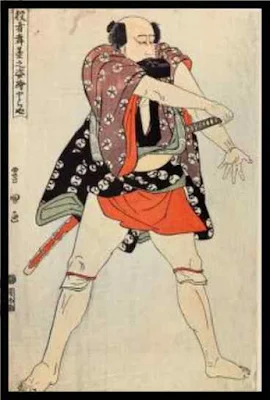A history of Japanese colour prints
 |
| A history of Japanese colour prints |
The first comprehensive survey of Japanese Wood -Engraving, Anderson's monograph in the Portfolio, appeared in 1895. The first attempt to write a history of this art was Strange's totally inadequate Japanese Illustration of 1897. Unfortunately, Strange had published before he was able to take advantage of the new light thrown upon his subject by Fenollosa, in his illuminating Catalogue of 1896, The Masters of Ukiyoye.
The only remaining sources of information for the student were a number of scattered articles, monographs, exhibition catalogues, and sale catalogues, and it seemed to me that I might do useful work by gathering together all this disjointed learning into a coherent whole.
Japanese art has become an element in our European culture; it supplies certain needs of our age and makes distinctly for its progress. But in order to appreciate Japanese Wood-Engraving to the full, we must know the inter-relation between the various artists, and the successive stages of development in their art; we also require a criterion by which to test individual essays, that we may not rest content with weak and imitative work when the best is within reach. A survey of Japanese Wood-Engraving which would serve these ends was the task I accordingly set before me.
In any appreciation of Japanese art, everything depends on the standpoint adopted by the critic. If, as the majority of writers on this subject have been wont to do, we apply the European standard, we shall be led to hail the impressionistic artists of the nineteenth century, and notably Hokusai, as the protagonists of Japanese Wood-Engraving, for we are naturally affected by the affinities we discern between our own ideas and those of these artists, in whom the European leaven had begun to work. If, however, we try, like Fenollosa, to take the Japanese point of view, we shall recognise that Hokusai's real greatness lies in those very elements of his art which are most alien to us; and we shall see, further, that among the innumerable masters of the eighteenth century, there were many who were greatly superior to him.
The art of the nineteenth century, with which alone the general public is to some extent familiar, has been given importance far in excess of its deserts. It was at best aftermath and in some respects a decadence. I have therefore dealt with it somewhat summarily, whereas I have traced the developments of the eighteenth century, constituting a rich, steady and varied evolution, with all possible care and elaboration.
My book is a provisional essay in the synthetic presentment of our knowledge of Japanese Colour-Printing, and a guide for those who require some direction in this, as yet by no means familiar field. I have made no attempt at exhaustive treatment, for any such scheme would be impossible of execution, in the face of the contradictions which abound in the literature bearing on my subject in different countries.
The collector must not look here for a treatise that will relieve him from the necessity of independent research or verification. Certain inequalities of the work may be explained by its genesis. Where the material on which I had to work was better prepared, as, for instance, in the case of Utamaro and Hokusai by the Goncourts, I was of course able to offer more. I have not shrunk from repetition on occasion when it seemed necessary to emphasise notable facts or to impress important views on the reader.
Contents:
I. General considerations I
Ii. A survey of the history of Japanese painting 29
Iii. The beginning of wood-engraving— black and white (1582-1743) 48
Iv. The development of colour-printing (1743-1765) 85
V. The first flowering of the polychrome print 100
Vi. The culmination: kiyonaga . . . .119
Vii. The period of utamaro 133
Viii. Hokusai 163
Ix. The remaining artists of the nineteenth century 181
Bibliography 195
Alphabetical list of signs 201
Index 203
Download 17.2 MB Contains illustrations

